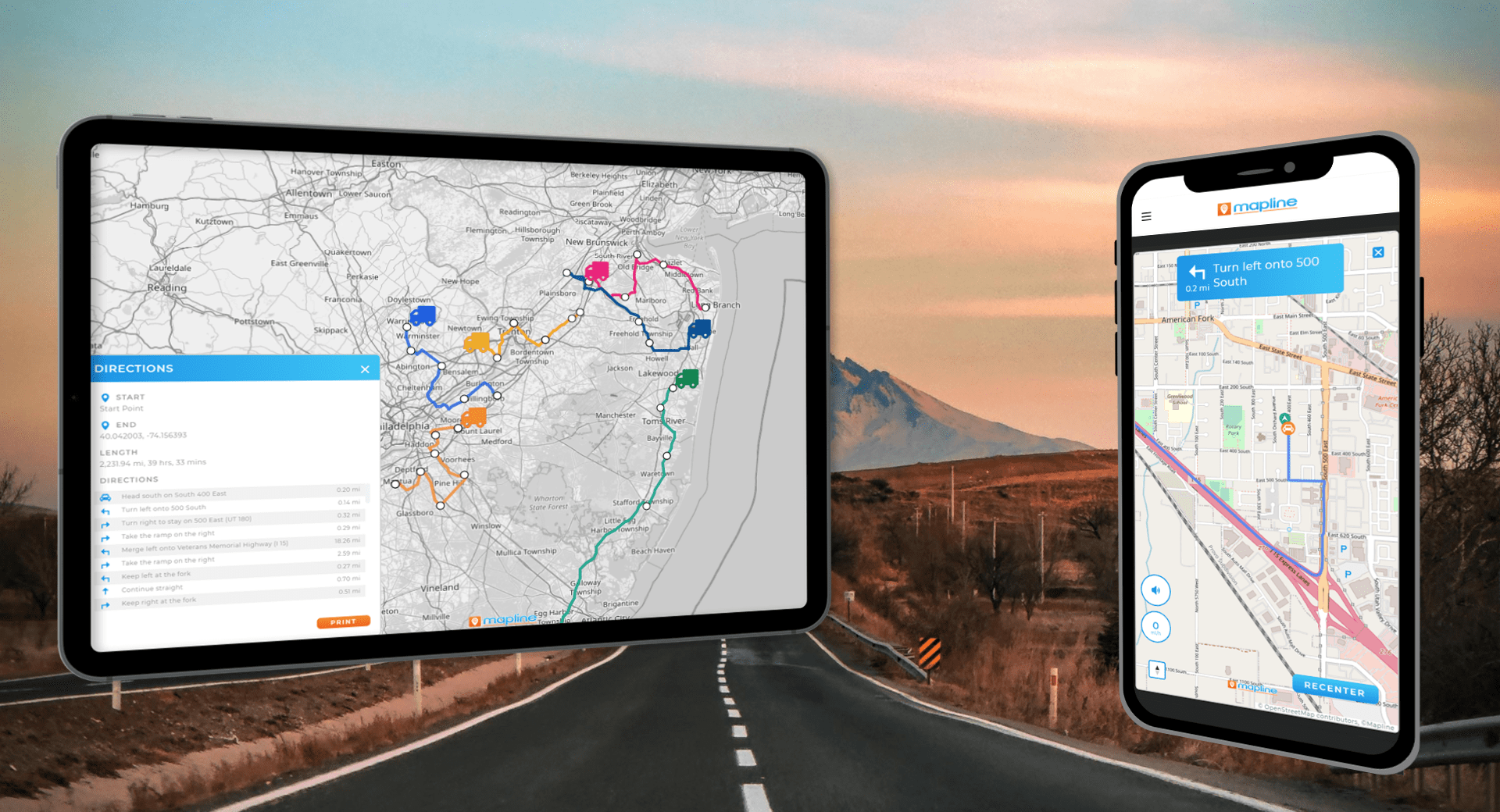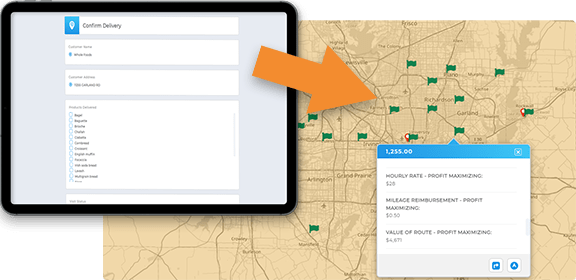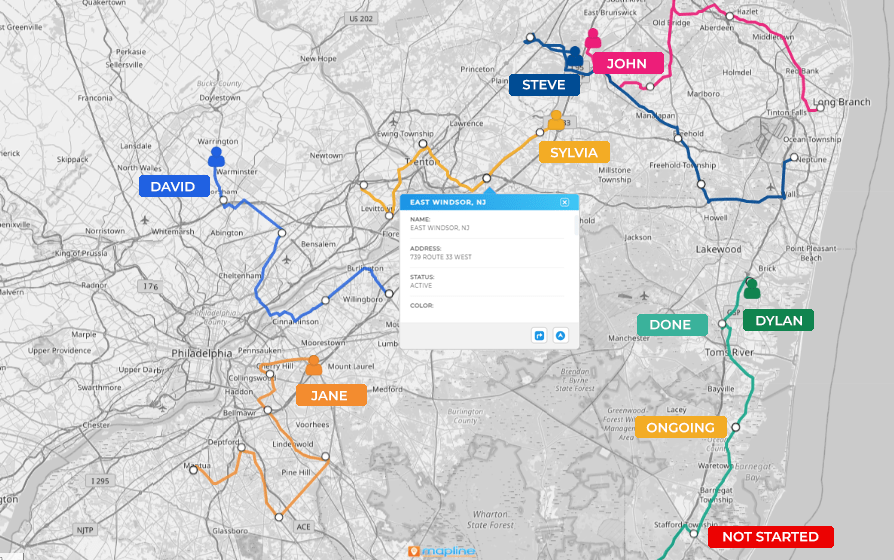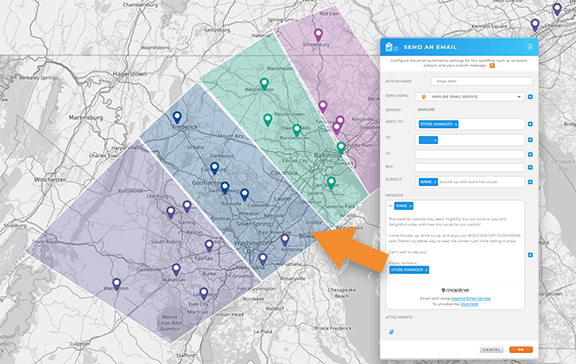- Blog
- Geo Routing
- Route Optimization in Excel: Why Enterprises Outgrow Spreadsheets
Is route optimization in Excel sustainable for businesses? Spreadsheets have long been a go-to tool for businesses managing simple tasks, but when it comes to complex logistics, they often create more problems than they solve. Many companies start with a route planner Excel spreadsheet because it’s accessible and easy to set up. But as deliveries scale, inefficiencies multiply — drivers spend more time on the road, fuel costs climb, and customers wait longer than they should. At some point, businesses realize that route optimization in Excel is no longer sustainable, and modern software becomes the smarter investment.
Why Businesses Start with Route Planning in Excel
Excel is flexible and familiar, which makes it a natural starting point for small businesses. You can upload data into a route planner Excel upload template, build a route planner Excel spreadsheet, and use formulas or maps to create basic routes. For companies with only a handful of stops, this approach works well enough. But as the number of deliveries or field appointments grows, Excel’s limitations become painfully clear — it wasn’t designed for delivery route optimization or real-time decision making.


Pro Tip: Spreadsheets may work in the beginning, but they can’t scale. Geo Routing goes beyond route optimization Excel templates with automated multi-stop planning, dispatch scheduling, and real-time fleet visibility — everything enterprises need to stay ahead.
The Limitations of Route Optimization in Excel
While Excel is powerful for calculations, it struggles with the complexity of logistics. Unlike dedicated delivery route planner tools, spreadsheets don’t automatically optimize stop sequences, adjust for traffic, or account for driver capacity. Companies that rely on route optimization Excel methods face hidden costs and inefficiencies that grow with scale. Key challenges include:
- No automatic optimization for multi stop route planning
- Time-consuming manual updates when routes change
- No integration with GPS or dispatch systems
- Lack of real-time visibility into driver progress
Why Enterprises Outgrow Spreadsheets
For larger businesses, the jump from Excel to dedicated dispatch and routing software is inevitable. A dispatch route planner or route dispatch software eliminates manual guesswork by generating optimized routes instantly. Features like workload balancing, proof of delivery, and customer notifications simply aren’t possible in a spreadsheet. As operations grow, enterprises need an integrated fleet management solution that pairs routing with dispatch, scheduling, and analytics to maximize efficiency.
Key Benefits of Modern Route Optimization Software
Upgrading from spreadsheets to a purpose-built system brings immediate results. Instead of static data, businesses gain real-time insights and automation that improve both efficiency and customer satisfaction. Benefits include:
Automated Optimization
Unlike Excel, a multiple route planner or multi address route planner automatically sequences stops for the best efficiency, saving hours of planning each week.

Real-Time Dispatching
With dispatch scheduling built in, managers can adjust assignments on the fly. This ensures the right driver is always on the best route, even as conditions change.

Full Visibility
Modern integrated fleet management tools track driver progress, fuel usage, and performance metrics. This visibility enables smarter decision-making and long-term cost savings.

Better Customer Experience
With optimized routes and proactive communication, customers receive accurate ETAs and faster deliveries — something spreadsheets alone can’t provide.

It’s the use of spreadsheets to manually plan and organize routes, often with templates or formulas.
Yes, but it lacks automatic optimization and real-time capabilities, making it inefficient for growing businesses
Manual work, no GPS integration, lack of real-time updates, and poor scalability.
Excel provides static planning, while software offers dynamic optimization, dispatch scheduling, and fleet management integration.
It connects route planning with dispatch, driver tracking, and analytics for complete operational control.
Yes. Mapline offers scalable, automated solutions that eliminate the inefficiencies of manual spreadsheets.









